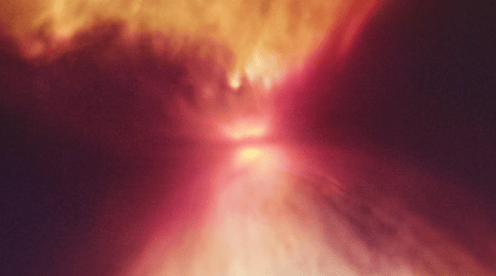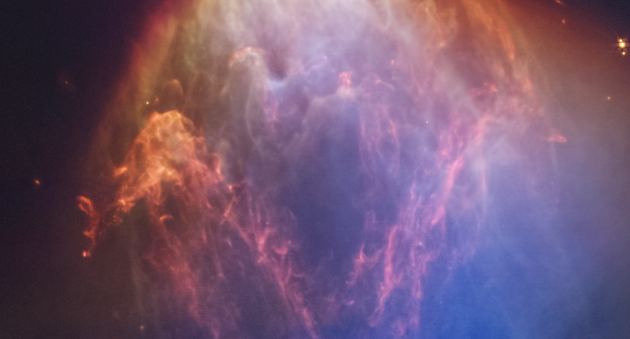What's the most exciting thing about the James Webb Space Telescope? The stunning images? The completion of its torturous path from concept to launch?
Or is it because it provides such compelling visual evidence of objects and processes long theorized about but difficult to observe?
Stars aren't born instantaneously. It takes a long time for a star to reach that awesome moment when fusion begins. At first, a star is little more than a knot of gas; at that stage, astronomers call it a protostar.
The JWST's latest image shows the protostar L1527, a star about 100,000 years old in the Taurus Molecular Cloud (TMC.) The TMC is about 430 light-years away, and it's the nearest large star-forming region to Earth. L1527 is a class 0 protostar, the first stage in the life of a protostar. At this stage of its stellar evolution, L1527 is only between 20% and 40% of the Sun's mass. That mass is held in a spherical shape due to gravity, but its shape is unstable.
It has a long way to go before becoming a main sequence star, and it's gathering more gas from the surrounding molecular cloud. The protostar gives off light, but not from fusion. Instead, the light comes from shocks on the surface of the protostar and the surrounding disk of material as the star accretes more mass.
While the star is hidden from view, the circumstellar disk is visible. The surrounding gas is hourglass-shaped, and the disk is in the thinnest part of the neck between the two lobes. It's the dark line in the thinnest part of the neck, and light from L1527 is travelling into the upper and lower parts of the hourglass, illuminating details in the gas.
The protostar is accreting material, but accretion can be a messy process, and some material is speeding away from the nascent star. The striking blue and orange clouds are the outlines of cavities carved into the surrounding gas by the speeding material. Intervening dust between L1527 and the Webb creates the colours: blue is thinner dust, while orange is thicker.
The wispy filaments in the image add to the striking effect. They're made of molecular hydrogen, driven into these forms by shockwaves and turbulence. In this region, the disruption inhibits other stars from forming. That allows the protostar to dominate the space, taking the bulk of the nearby material for itself.
L1527 is on its way to becoming a main sequence star. It's drawing material toward itself, and as the material approaches the star it forms a rotating disk called an accretion disk. The disk rotates and compresses the material, heating it until it releases light, in this case infrared light. As the protostar accretes more material from this disk onto itself, it grows more and more massive. Eventually, all that inward gravitational pressure raises the temperature of the gas to extreme heights. The high pressure, high temperature inside the star will force hydrogen atoms together. At that moment, L1527 will be a true star, alive with fusion.
There's a lot astronomers don't know about protostars, fusion, disks, and planet formation. The Webb's capabilities will draw back the curtain on some of those processes. The curtain literal in this sense, a curtain made of gas that's impenetrable to some light. Though we still can't see the protostar behind this particular curtain, the JWST gives us more detailed information on the environment immediately outside of the protostar, and that paves the way for a greater understanding.
The dark disk surrounding L1527 is about the same size as our Solar System, and there are likely clumps of dust and gas forming in there, planetesimals on their own journey from clump to spherical planet. In that sense, this image is a glance backward in time, to when the Sun was only a protostar and the planets were still forming.
It's interesting to look back to when the JWST was first being conceived. Astrophysicists wanted to address many of the outstanding questions around star formation. A design mission reference proposal for the JWST from the early days, when it was known as Next Generation Space Telescope (NGST,) shows how hungry the astrophysics community was for a powerful infrared space telescope. The Hubble was producing astounding results, and eager minds looked forward to the next space telescope.
"We propose to bring the power of NGST to bear on one of the most important problems in star formation, understanding protostellar formation from parent molecular cores and subsequent evolution towards becoming young stars," the paper states. "We propose to answer these questions by undertaking a program of mid-IR imaging and spectroscopic observations of protostellar sources with NGST. We will probe the infalling envelopes, central objects, accretion disks, and accretion-powered jets from protostars which are still accreting the bulk of their masses."
After a lot of hard work and political wrangling, here we are.
 Universe Today
Universe Today


